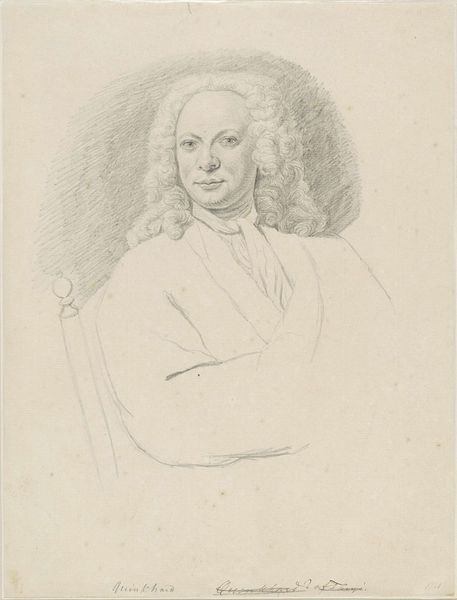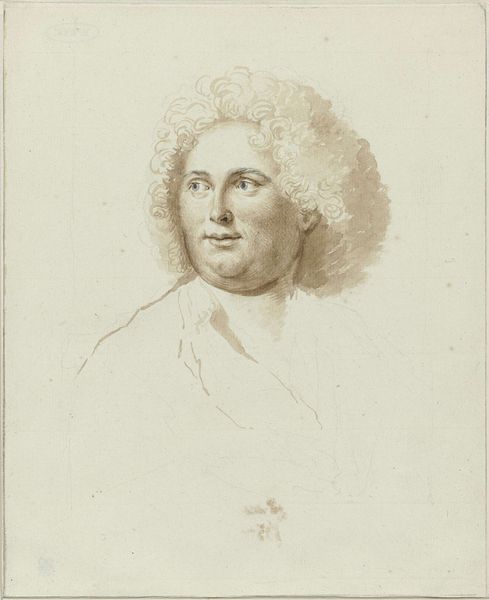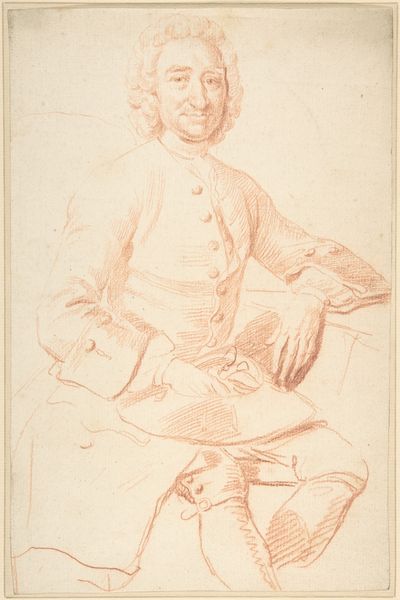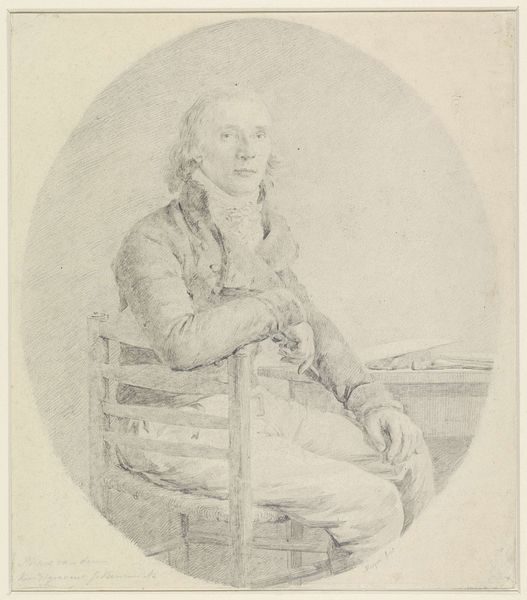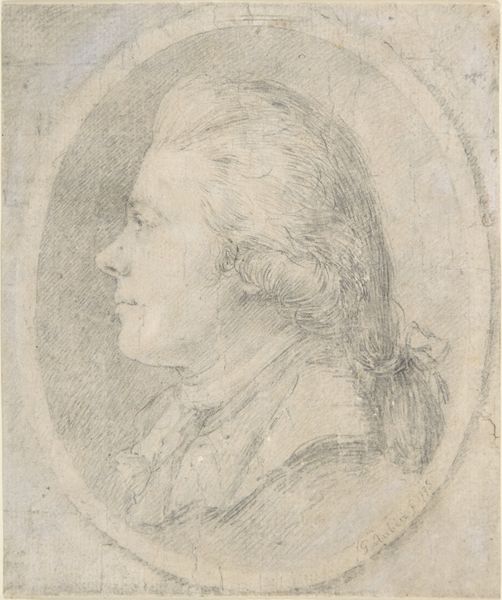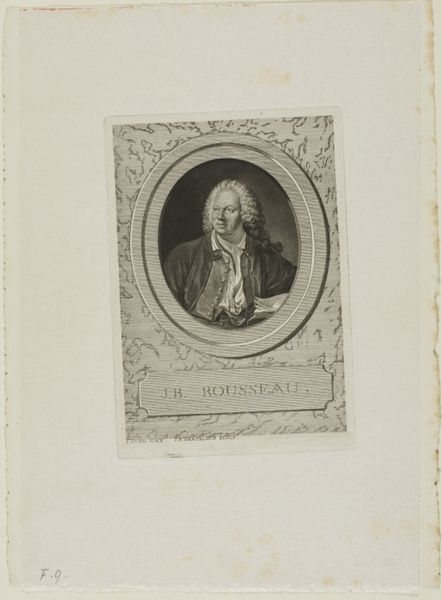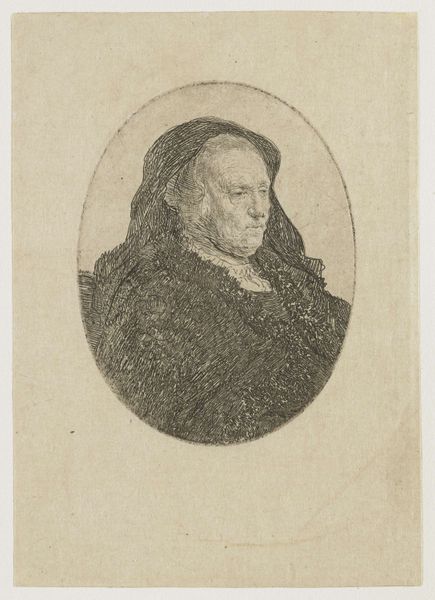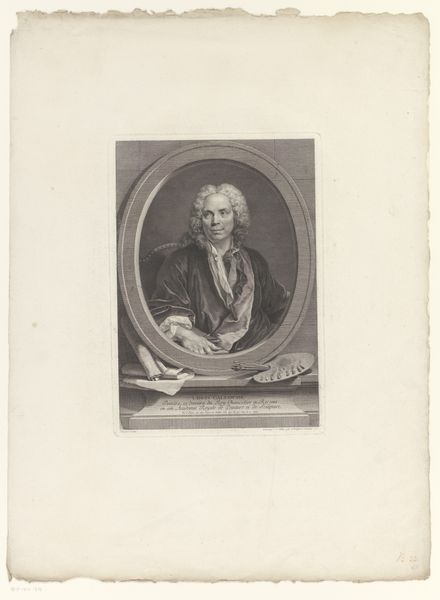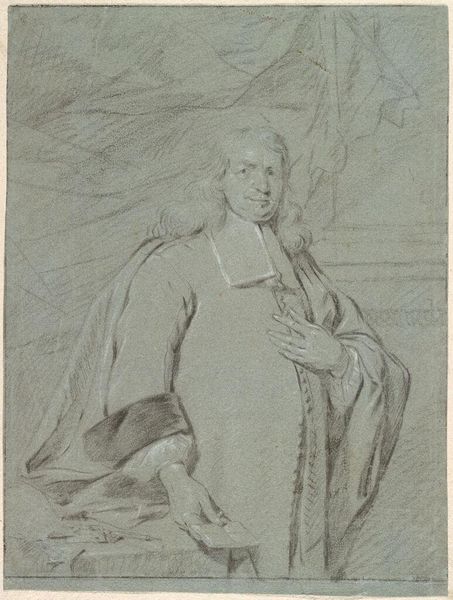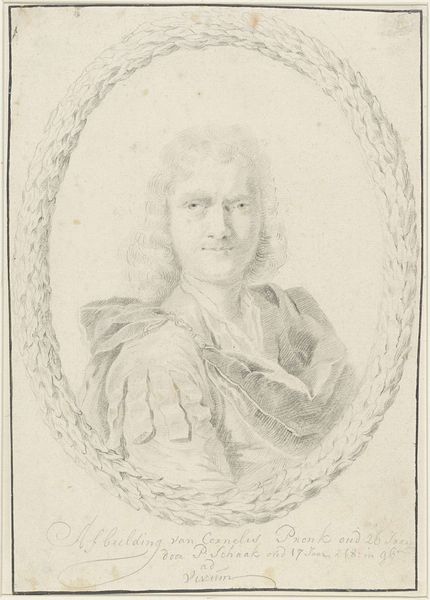
drawing, pencil
#
portrait
#
pencil drawn
#
drawing
#
self-portrait
#
charcoal drawing
#
pencil drawing
#
pencil
#
portrait drawing
Dimensions: height 215 mm, width 155 mm
Copyright: Rijks Museum: Open Domain
Editor: Here we have Jan Wandelaar’s "Self-Portrait," created in 1743 using pencil. There's something incredibly intimate about a self-portrait rendered in such a delicate medium. What do you see in this piece that speaks to its time and creation? Curator: Looking at the lines of the drawing itself, the soft gradations achievable through pencil, speak to a shift in artistic practice. The focus moves toward the direct trace of the artist’s hand. Consider the paper—where was it made, how was it sourced? Paper mills themselves represent an industrial context for artistic production, connecting the delicate art object to larger systems of labor and resource extraction. And who would consume these portraits? Was this circulated amongst artist guilds as a kind of calling card? Editor: That’s a really interesting way of looking at it, considering the economic side. I hadn't thought about the paper itself having a story to tell, but also I thought drawings like this were strictly about depicting wealthy patrons. Curator: Exactly! And what does it mean for an artist to depict himself using the very materials of his trade? It brings up questions of artistic identity tied to production and skill. Is this not only an artistic depiction, but also, perhaps, a commercial one? Note also how drawing elevates itself beyond mere craft at the time; it signifies intellectual labor, not merely manual work. The very *act* of drawing becomes an emblem of learned status. Editor: So it's not just a picture; it’s also about showing the artist’s process and asserting their role in society. I'll never look at drawings the same way. Thanks! Curator: Precisely! Recognizing these often overlooked aspects offers a more complete and insightful understanding of the work.
Comments
No comments
Be the first to comment and join the conversation on the ultimate creative platform.
